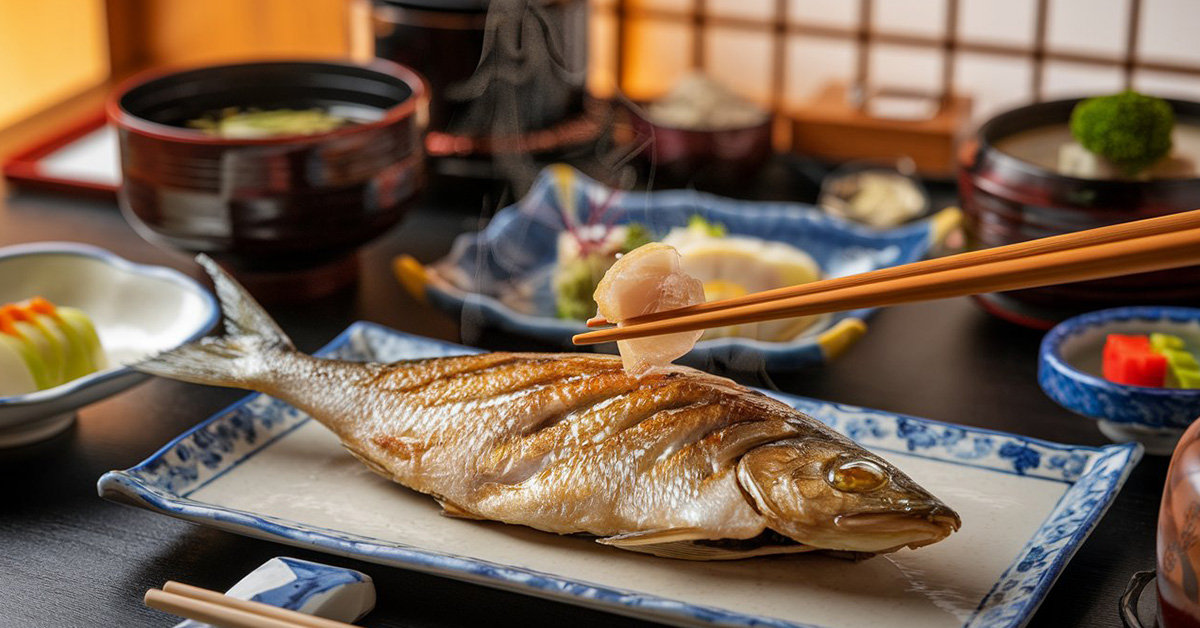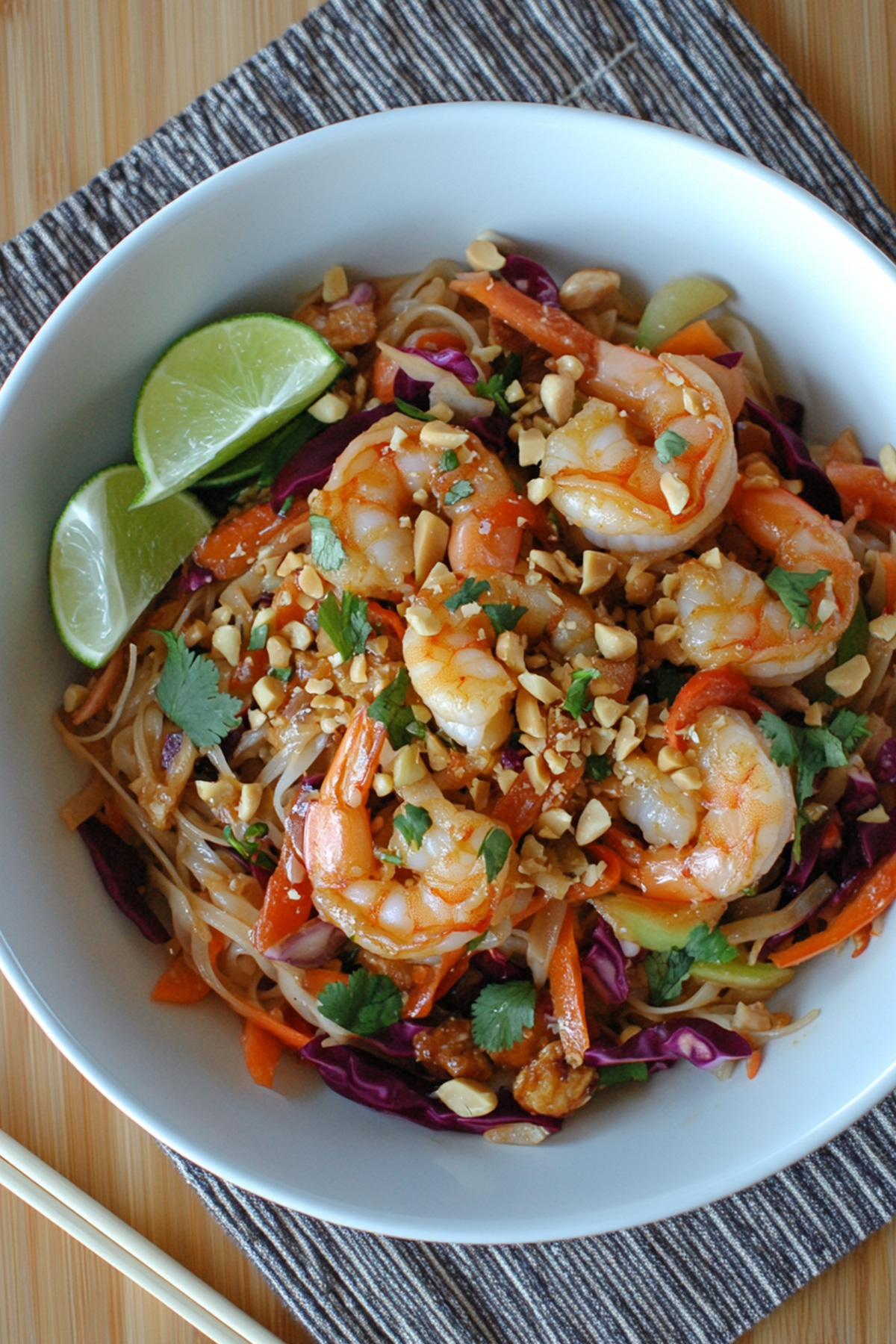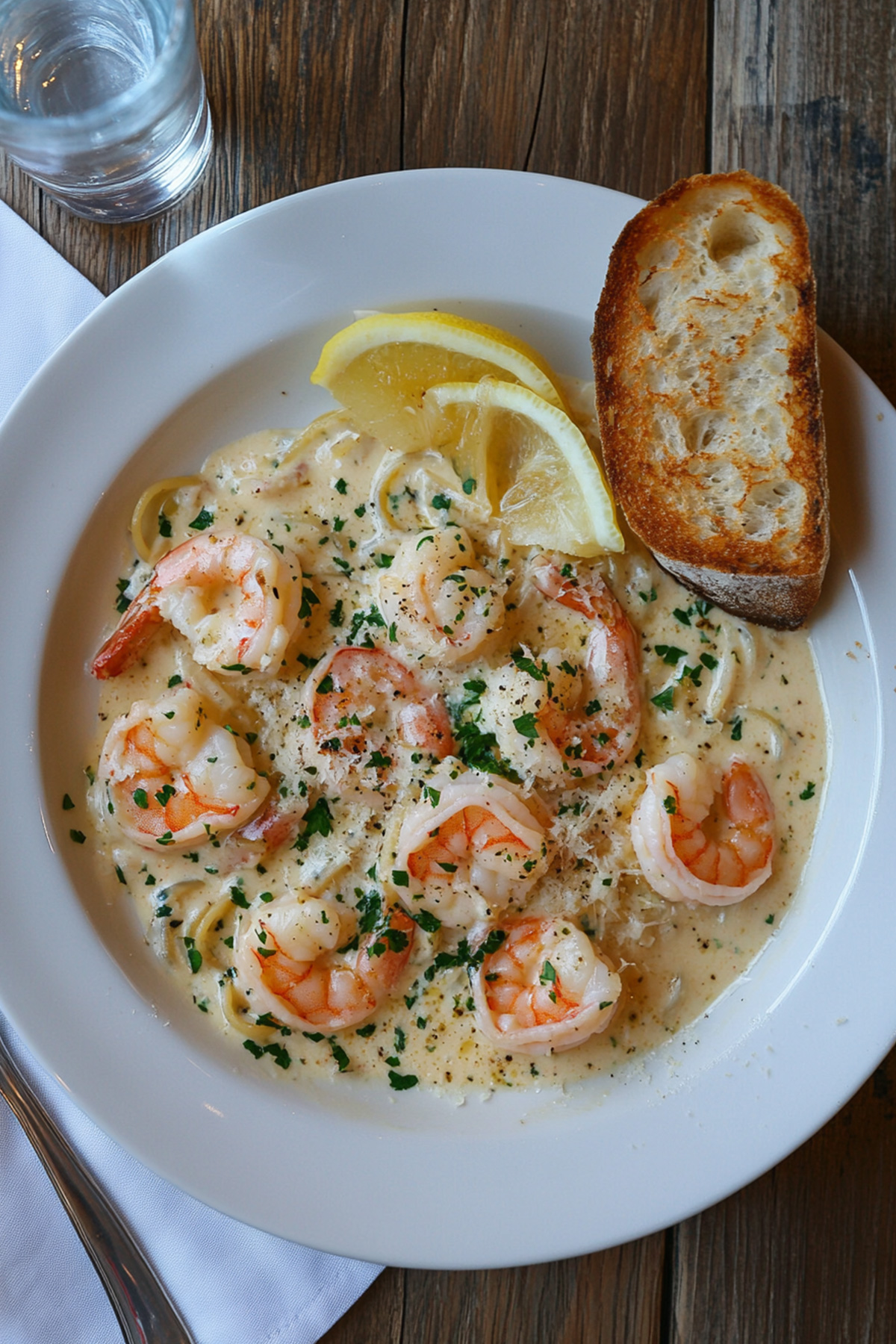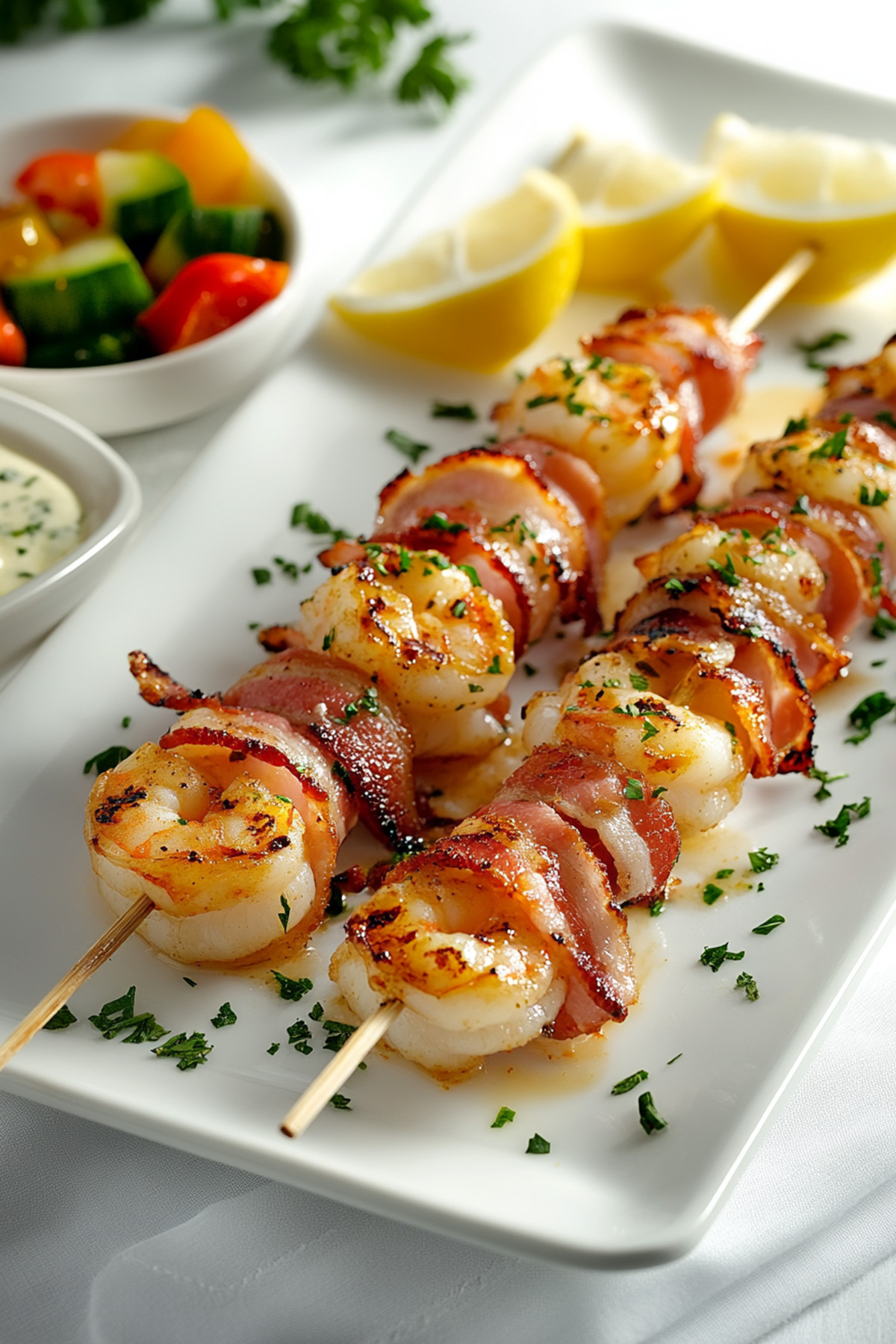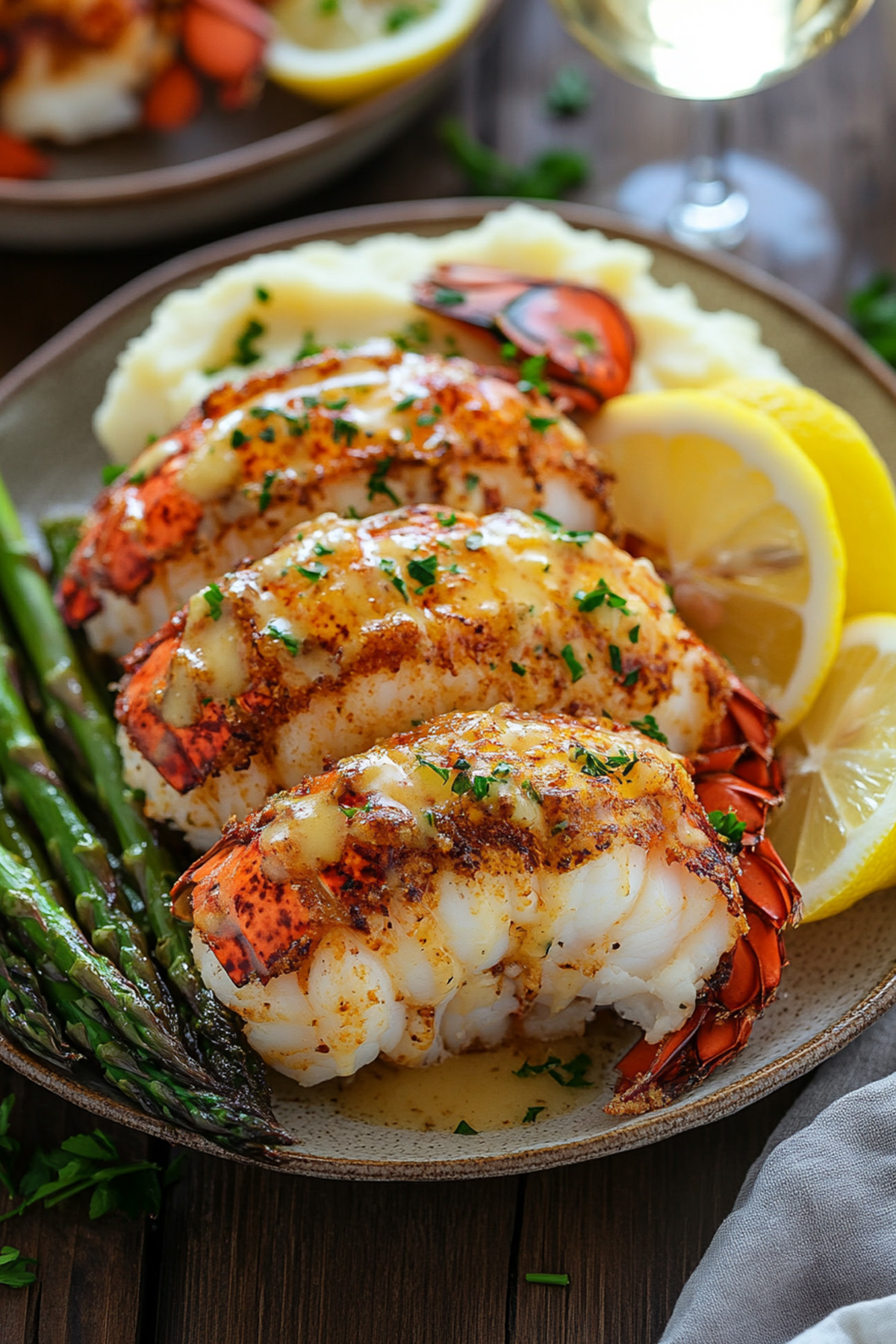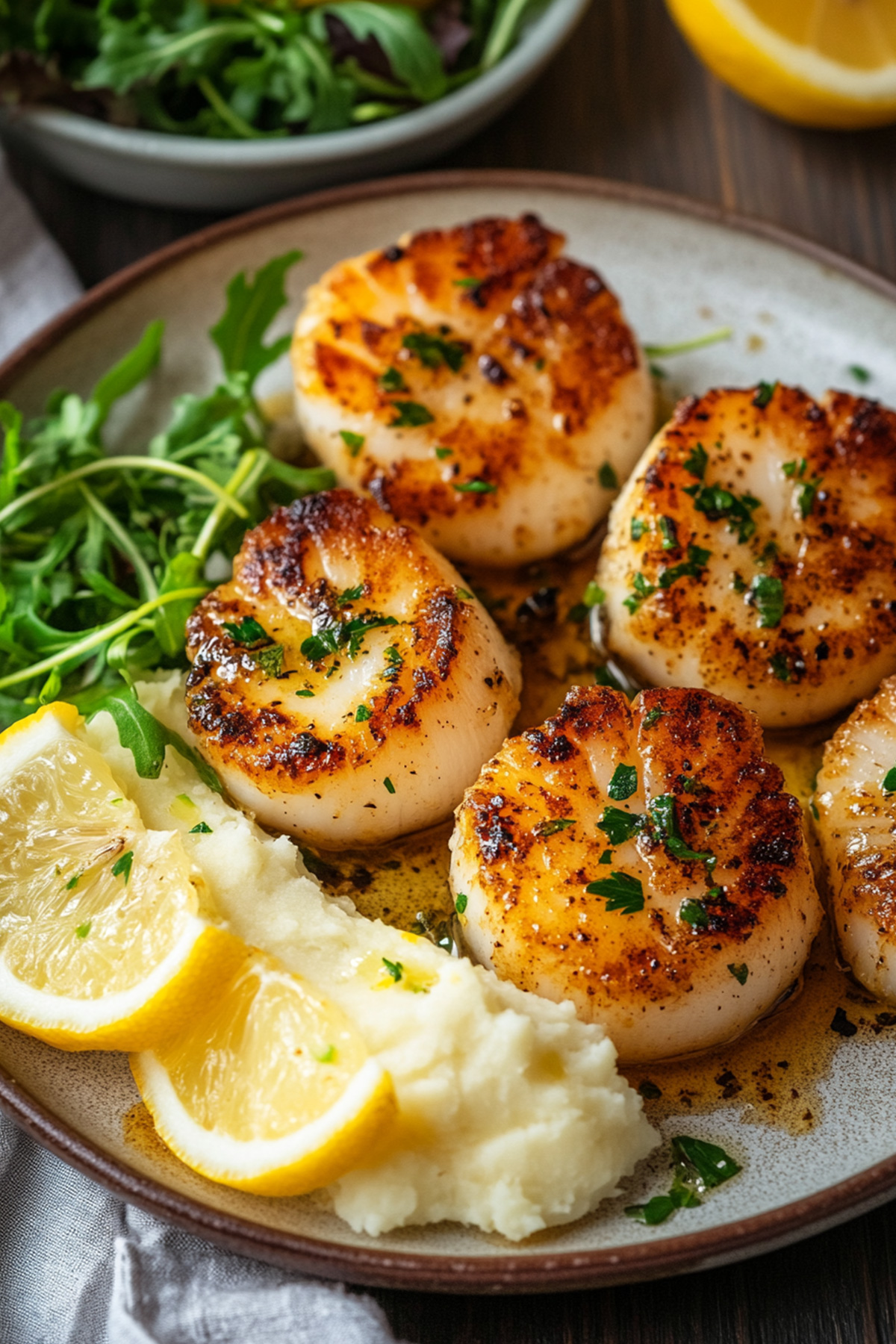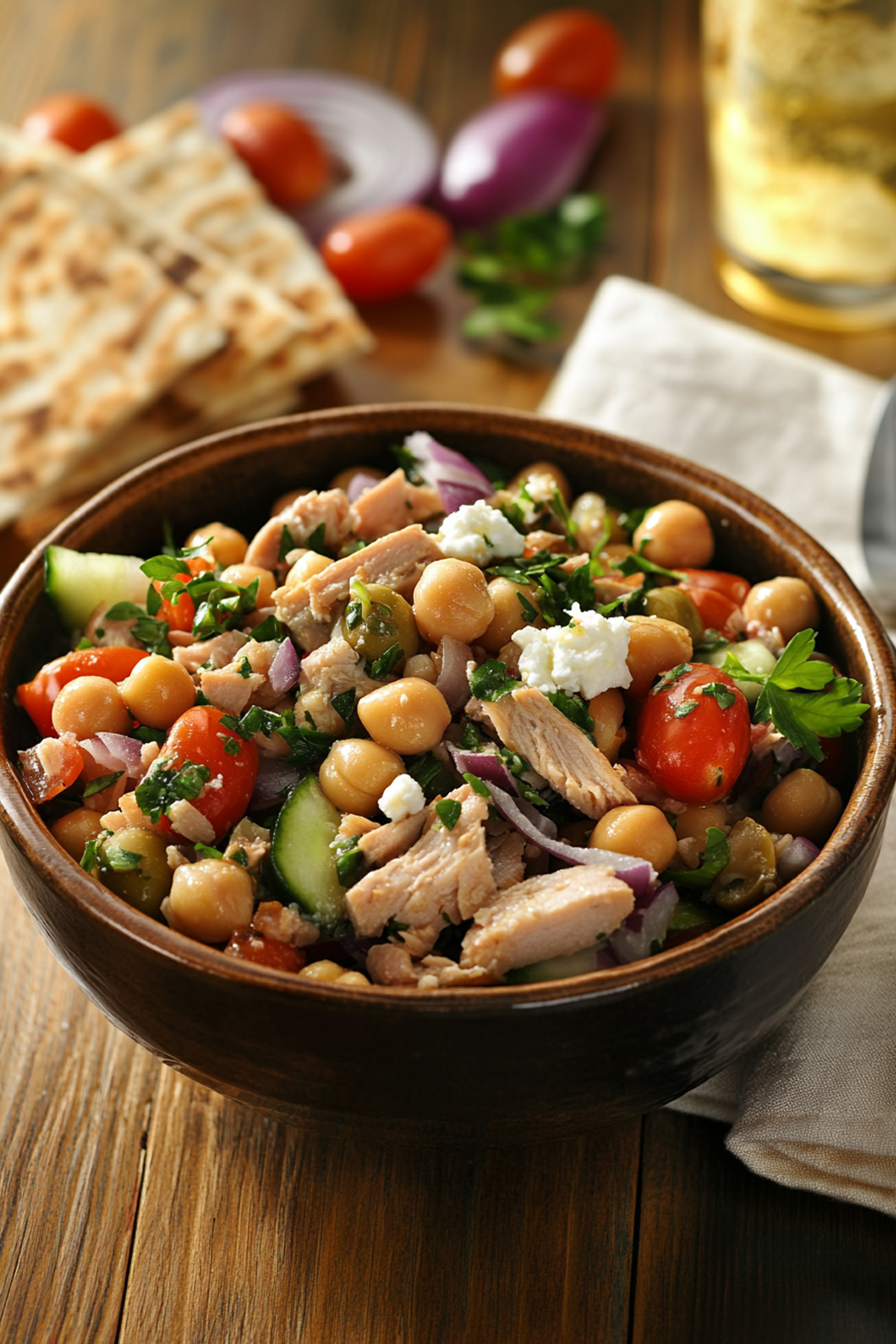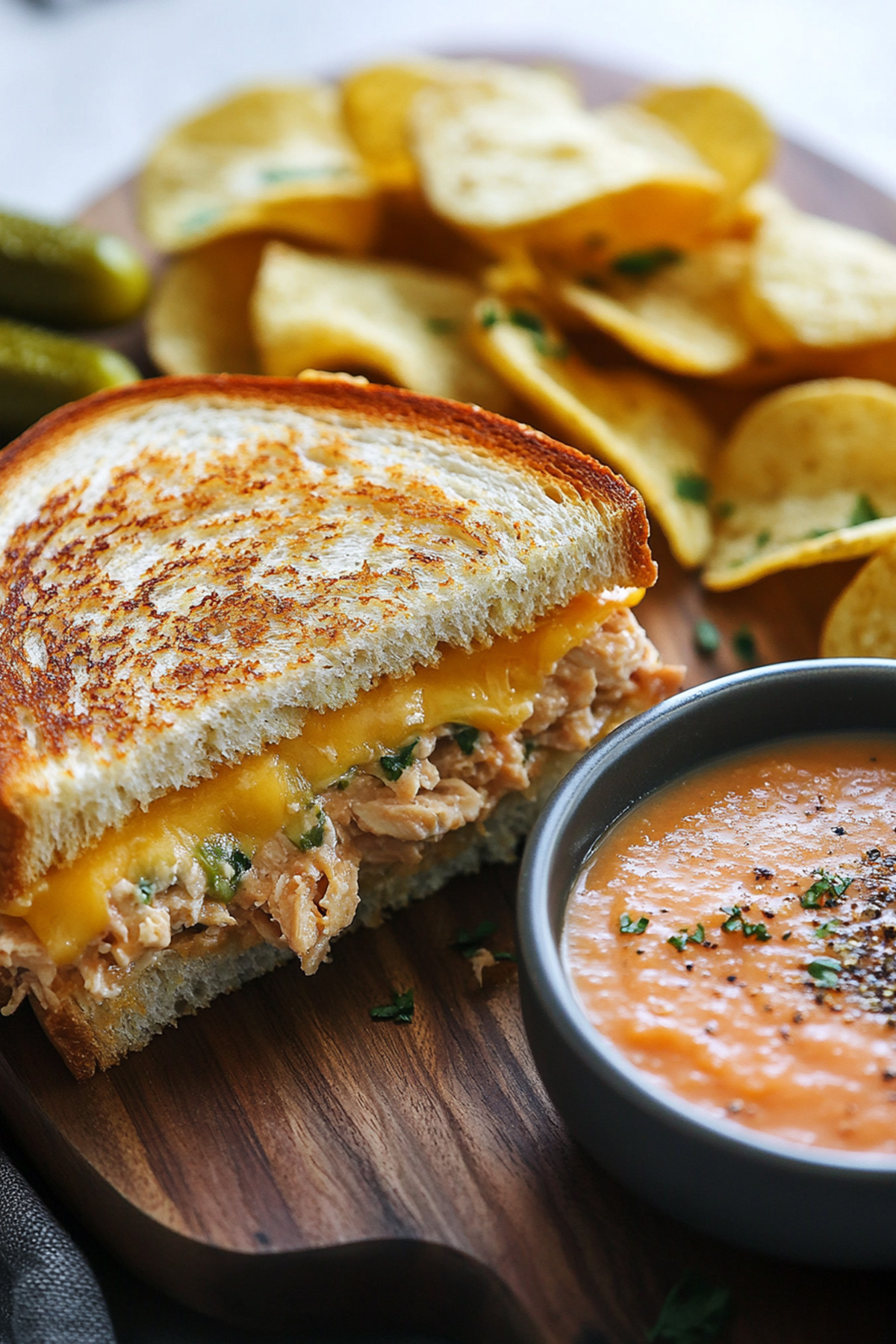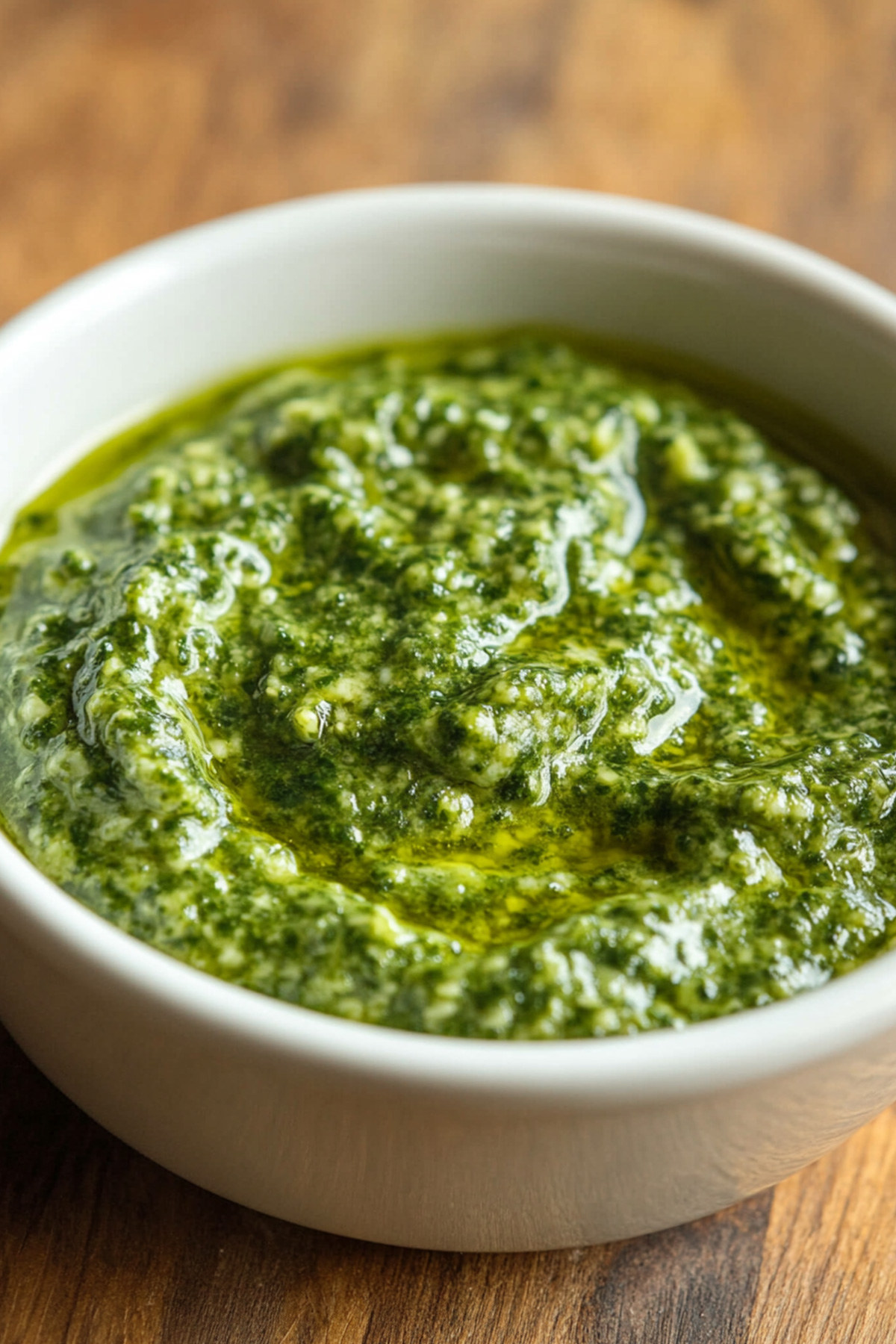Dining at a ryokan is more than just a meal; it’s an immersive experience that invites you to explore the question, “How Do I Eat the Grilled Fish in Ryokans? Tips for Using Chopsticks.” Imagine yourself surrounded by traditional tatami mats and sliding shoji screens, with the enticing aromas of expertly grilled fish filling the air. Each dish showcases seasonal ingredients, artistry in presentation, and centuries-old culinary traditions. This unique atmosphere not only tantalizes your taste buds but also deepens your appreciation for Japan’s rich heritage.
Indulging in this exquisite cuisine comes with its own set of etiquettes and techniques that enhance the experience even further. Mastering chopstick usage is essential when enjoying grilled fish—it’s not just about eating; it’s about showing respect for the food. The way you handle each fillet reflects gratitude for the craftsmanship behind it and connects you more profoundly to the culinary journey on your plate. So, whether you’re a seasoned traveler or an eager culture enthusiast, let’s delve into how to navigate this delicious tradition seamlessly!
Table of Contents
What is a Ryokan?
According to Wikipedia, A ryokan is a traditional Japanese inn that provides not just shelter, but an immersive experience into Japan’s rich culture and history. These establishments often feature tatami mat floors, sliding shoji doors, and futon bedding, creating a serene atmosphere conducive for relaxation. Staying at a ryokan is akin to stepping back in time; it offers travelers an opportunity to embrace the harmonious connections between nature and hospitality that are foundational to Japanese culture. Many ryokans are located near hot springs (onsen), allowing guests to indulge in soothing baths followed by exquisite culinary experiences.
Central to the ryokan’s charm is its dining experience, whereby meals reflect seasonal ingredients prepared with meticulous attention to detail. A hallmark of these meals is grilled fish—an ode to Japan’s coastal geography and fishing tradition. Dishes often feature local species such as sanma (saury) or saba (mackerel), which are frequently prepared simply yet elegantly grilled over charcoal to enhance their natural flavors. The presenting of dishes together in kaiseki style highlights not only aesthetics but also the philosophy of balance and seasonal harmony, where each bite tells a story about the land and seascape from which it came.
The importance placed on grilled fish within this context speaks volumes about Japanese culinary traditions. Grill preparation methods focus on preserving flavor integrity while showcasing freshness—qualities prized by chefs throughout the nation. Often served with tangy sides like grated daikon radish or yuzu sauce, both enhance the taste while highlighting rice or pickled vegetables alongside, further underpinning the multi-faceted approach to meal composition seen in ryokans.
Ultimately, a visit to a ryokan transcends mere lodging; it’s an invitation to appreciate Japan’s profound respect for food as art. By participating in this unique dining ritual, guests engage deeply with cultural values surrounding hospitality and shared meals—a fundamental aspect of communal life in Japan that binds people closely together across generations.
The Experience of Dining in a Ryokan
Dining in a ryokan is a feast for the senses, where every element of the experience—from the tranquil ambiance to the visually stunning array of dishes—creates an atmosphere that pays homage to Japanese culture. Typically held in tatami-floored rooms adorned with shoji screens and sliding doors that open onto serene gardens, meals are served on low tables, encouraging diners to engage more intimately with their food. As you settle down, the sound of gently flowing water and rustling leaves provides a harmonious backdrop, inviting you into a moment of mindfulness before your meal begins.
At the heart of ryokan dining is a commitment to seasonal ingredients, often referred to as “shun” in Japanese cuisine. This principle guides chefs in selecting fresh produce and sustainable seafood that reflect the time of year, ensuring that each dish not only speaks to traditional flavor combinations but also highlights nature’s bounty. For instance, during autumn months, you might encounter dishes featuring sanma (Pacific saury), celebrated for its rich taste when grilled to perfection. Complemented by delicacies like pickled vegetables or earthy mushrooms harvested from local forests, these seasonal fare showcase the region’s best offerings while inviting diners to appreciate nature’s cycles.
Presentation also plays a critical role in the ryokan dining experience. Each plate is carefully arranged to evoke aesthetic harmony, often mimicking natural landscapes through color contrasts and artistic designs. The use of artisanal tableware adds another layer of beauty; many ryokans feature hand-crafted pottery or lacquerware unique to specific regions, which allows guests not just to enjoy delicious food but also engage with Japan’s deep-rooted craft traditions. Every detail matters—from shredded daikon radish placed beside grilled fish to evoke waves glistening under sunlight—to elevate your meal into an art form worth savoring.
Immersing yourself in this experience encompasses far more than simply eating; it becomes an exploration of culture, tradition, and appreciation for simple yet profound pleasures found within each bite and sip. Embrace this journey as you partake in a culinary ritual that transcends mere sustenance and captures the essence of Japan’s connection between land and table.
Understanding Grilled Fish in Ryokan Cuisine
When dining in a ryokan, grilled fish often takes center stage, showcasing the simplicity and complexity of Japanese culinary tradition. Two popular options are sanma (Pacific saury) and saba (mackerel). Sanma, with its elongated body and rich flavor, is especially cherished in autumn; its savory oil content enhances its taste when simply grilled with salt. In contrast, saba offers a deeper flavor and firm texture that pairs beautifully with light seasoning or grated daikon radish. The choice you encounter may depend on seasonal availability, reflecting Japan’s deep connection to nature.
Not only do these varieties provide tantalizing taste experiences for your palate, but they also deliver significant nutritional benefits. Grilled fish is an excellent source of high-quality protein and essential omega-3 fatty acids, known for their positive effects on heart health and brain function. Additionally, these fish are rich in vitamins B12 and D along with several vital minerals that contribute to overall wellness. Enjoying such dishes allows guests to partake in a meal that is as wholesome as it is delicious—one steeped in tradition yet tailored to modern sensibilities.
Moreover, the artistry involved in grilling these fish serves to elevate not just their flavors but also the entire dining experience at the ryokan. At many establishments, chefs dedicate their skills to mastering the techniques required to achieve perfection—the crispy skin balanced against tender flesh illustrates an attention to detail representative of Japanese cooking philosophy. This meticulous process involves not only selecting top-quality ingredients but also ensuring optimal timing on the grill for that delightful mouthfeel—each bite serving as a reminder that food at ryokans isn’t merely about sustenance; it’s about celebrating nature’s gifts through the senses.
In essence, understanding grilled fish within ryokan cuisine reveals much more than what meets the eye or tickles the taste buds; it offers insights into cultural values around seasonality, nutrition, and artistry in dining. This multifaceted approach invites diners not just to enjoy a meal but also to embrace Japan’s culinary heritage tightly woven into every carefully prepared dish.
How Do I Eat the Grilled Fish in Ryokans?
Dining in a ryokan is not just about satisfying hunger; it’s an immersive experience rooted in tradition and cultural respect. One of the key components of this experience is understanding Japanese dining etiquette, which showcases gratitude for the meal and enhances the overall enjoyment. As you approach your grilled fish, it’s essential to begin with a deep breath of appreciation—silence may be observed as a way to express reverence for the culinary craft before you. In Japan, meals are often seen as gifts from nature, and acknowledging that gives special weight to the dining ritual.
Chopsticks play a pivotal role in this etiquette, serving not only as tools for eating but also as symbols of respect and carefulness during your meal. Improper use can detract from the ambiance of the ryokan experience. For instance, it’s considered impolite to stick chopsticks vertically into rice or pass food directly from one pair of chopsticks to another—both actions unwittingly evoke funeral practices and indicate disrespect towards both the food and those sharing your table. Instead, lift pieces gently with care, aiming for a graceful presentation throughout your meal.
Moreover, when it comes to grilled fish specifically, proper chopstick techniques ensure you maintain both elegance and efficiency while eating. Approach with caution: when attempting to separate delicate fish from its bones, focus on using the tips of your chopsticks with light pressure rather than brute strength. This method allows you not only to extract delectable morsels but also to showcase an appreciation for craftsmanship in each bite. The quiet confidence in how you handle your food will resonate within this serene setting.
Lastly, remember that every aspect of dining at a ryokan—from how you’re seated to how dishes are presented—is infused with meaning. Embracing these nuances encourages deeper appreciation not just for grilled fish but also for Japanese culinary traditions as a whole. Allowing yourself to engage fully with these customs can elevate your dining experience from simply enjoyable to deeply transformative—an exploration through taste that connects culture, history, and artistry into each beautiful dish served before you.
Tips for Using Chopsticks Effectively
Using chopsticks can be a delightful part of the dining experience in a ryokan, especially when savoring the delicate flavors of grilled fish. To start, it’s essential to hold the chopsticks correctly for optimal control. Place one chopstick comfortably between your thumb and index finger while resting it on your ring finger; this forms a stable foundation. The second chopstick should be held similarly, positioned between your thumb and index finger—yet it’s crucial to ensure that it is free to move while the other remains static. Practicing this grip will enhance your dexterity and make handling food much easier.
When engaging with grilled fish specifically, you’ll want to employ some techniques unique to separating the meat from the bones gracefully. Begin by locating the backbone; gently slide one chopstick along its length to find an opening where you can wedge in your second stick. With a gentle twist and pull, you can separate pieces of fish from their bony structure without leaving too much damage behind—an impressive feat that showcases both skill and respect for the dish’s presentation. This mindful approach not only shows appreciation for the craftsmanship involved in preparing your meal but also heightens your culinary enjoyment.
Another aspect of using chopsticks effectively revolves around maneuvering bite-sized pieces into satisfying sections without compromising their integrity or making a mess on your plate. A subtle yet important technique involves using your chopsticks’ ends like pincers: pinch (don’t stab) pieces lightly as you lift them from the grill or plate. This method allows you to carry morsels delicately to your mouth while maintaining visual appeal and avoiding wastefulness—a vital principle throughout Japanese culture.
By learning these essential skills, you’ll not only ease great enjoyment during each ryokan dining moment but also gain invaluable insight into Japanese etiquette surrounding eating with chopsticks. The process becomes more than just a means to savor grilled fish; it transforms into an opportunity to appreciate Japan’s culinary traditions intimately and respectfully**—a journey where every bite tells a story through seasoned flavors and artful presentations.
Pairing Sides with Grilled Fish
In a traditional ryokan setting, grilled fish is rarely served alone; it’s part of a beautifully curated meal that includes several side dishes aimed at enhancing the overall dining experience. Common accompaniments to grilled fish include steaming bowls of rice, savory miso soup, pickled vegetables (tsukemono), and sometimes even a delicate salad made with seasonal greens. Each component plays a role in balancing the flavors and textures, allowing diners to appreciate the nuanced taste of the grilled fish while enjoying an array of contrasting items.
Rice is considered the staple of any Japanese meal and acts as a neutral backdrop for rich flavors found in grilled fish like sanma or saba. A spoonful of perfectly cooked rice helps cleanse the palate between bites, making each piece of fish deliciously distinct. Miso soup, often imbued with umami from dashi stock, serves as a warm companion that complements the smokiness of the charred skin on your fish. The gentle flavor profile couples well without overwhelming other tastes on your plate.
To elevate the dining experience further, consider engaging with pickled vegetables alongside your main dish. Tsukemono varieties—such as sweet and sour daikon or salty cucumber—bring brightness and acidity that can beautifully cut through oily or richer fish preparations. Each bite becomes a delightful exploration of flavors where the vibrant notes enhance rather than detract from your primary focus—the featured grilled delicacy.
Finally, when dining at a ryokan, don’t hesitate to explore local specialties available for pairing. For example, if you’re lucky enough to find yuba (tofu skin) accompanying your meal—a specialty from regions like Kyoto—it adds both texture and depth without overshadowing the lovely savoriness of your grilled fish. Embrace these combinations, savor each bite fully, and immerse yourself in this exquisite journey through Japan’s culinary culture while using chopsticks as an essential tool for connection to tradition.
Common Mistakes to Avoid When Eating Grilled Fish
Dining at a ryokan is an experience steeped in tradition, and overlooking the nuances of this rich culture can detract from your culinary journey. One common mistake that visitors often make is misusing chopsticks, which not only demonstrates a lack of cultural awareness but may also unintentionally offend your hosts. For instance, it’s considered inappropriate to stick your chopsticks upright in your bowl of rice or use them to point at others or objects at the table. Instead, treat your chopsticks with respect by placing them on the designated rest or simply next to your plate when not in use. This small gesture conveys appreciation for both the meal and the dining customs.
Another pitfall travelers might encounter involves being overly casual with etiquette during their meal. While enjoying grilled fish alongside other seasonal dishes, remember that silence during the first few bites reflects gratitude toward those who prepared the food. Filling conversation after you’ve started eating may distract from savoring the flavors, diminishing an integral part of this immersive experience. Furthermore, adopting an informal approach can muddle the delicate balance established within ryokan dining settings and lead to misunderstandings with staff.
Ignoring the unique aspects of ryokan dining culture also limits one’s ability to fully absorb its significance. Each plate presented—especially one featuring beautifully grilled fish—carries with it centuries of artistry and regional pride. By chewing quickly or hastily discarding bones without attending to their placement on side plates, guests may unwittingly dismiss these vital components of Japanese cuisine. Appreciating every element—from decorum around serving styles to presentation—will deepen your connection not only with what you’re consuming but also with the overarching principles that breathe life into ryokan experiences.
Finally, taking a moment to observe how locals navigate these meals can provide invaluable insights into proper conduct and technique, enhancing both affinity for Japanese culture and table manners alike. Engaging respectfully and attentively ensures not only a more enjoyable meal but also fosters genuine connections as you explore Japan’s flavors through its treasured traditions.
Enhancing Your Dining Experience at a Ryokan
Dining at a ryokan offers more than just a meal; it’s an immersive cultural experience that encapsulates the spirit of Japan. To truly enhance this occasion, take the opportunity to engage with the staff, who often have deep knowledge about the food being served. Don’t hesitate to ask questions about the types of fish or local ingredients used in your grilled dish. For instance, you might wonder about the specific preparation methods that give saury (sanma) its unique flavor or how seasonal vegetables are selected for your kaiseki dinner. These conversations not only enrich your culinary experience but also forge a connection with Japanese culture through its culinary traditions.
Additionally, embracing local customs goes beyond food preparation; it extends to understanding dining etiquette and appreciation of rituals surrounding meals. When you sit down to eat, take a moment to observe how others interact with their dishes — you might notice subtle behaviors that showcase respect for both the meal and its origins. For example, many diners will pause before eating to express gratitude by saying “itadakimasu,” which signifies appreciation for what they are about to receive. Participating in such practices creates a deeper connection to your ryokan experience as well as a demonstration of respect for Japanese tradition.
Consider also exploring aspects of ryokan culture outside of mealtime. Many establishments offer guided experiences ranging from tea ceremonies to zen gardening workshops that further immerse guests in local heritage. By taking part in these activities, you’ll gain fresh perspectives on Japanese hospitality and art forms while enhancing your overall stay at the ryokan. This holistic approach ensures that every moment spent there ripples into lasting memories rather than mere observations, creating profound insights into Japanese life and values.
In sum, engaging with staff about food origins and embracing local customs transforms your dining experience from simple enjoyment into an enlightening journey through Japan’s rich culinary landscape. The attention given to every detail is meant not just for sustenance but also as an invitation to appreciate history, nature, and community — elements that make dining at a ryokan genuinely special.
Embracing the Art of Ryokan Dining
In conclusion, enjoying grilled fish at a ryokan is more than just a meal; it’s an experience steeped in culture and tradition. By understanding how to properly use chopsticks, you can savor each bite while showing respect for the food and its origins. Remember to hold your chopsticks correctly and navigate around those delicate bones with care. This not only enhances your dining experience but also deepens your connection to Japanese culinary art.
As you indulge in this delightful cuisine, take a moment to appreciate the intricate details—from the seasonal ingredients to the thoughtful presentation. Every aspect of ryokan dining invites curiosity and respect for tradition. By being mindful of etiquette and engaging with local customs, you enrich your journey through Japan’s rich cultural tapestry. Enjoy every moment, one delicious bite at a time!

